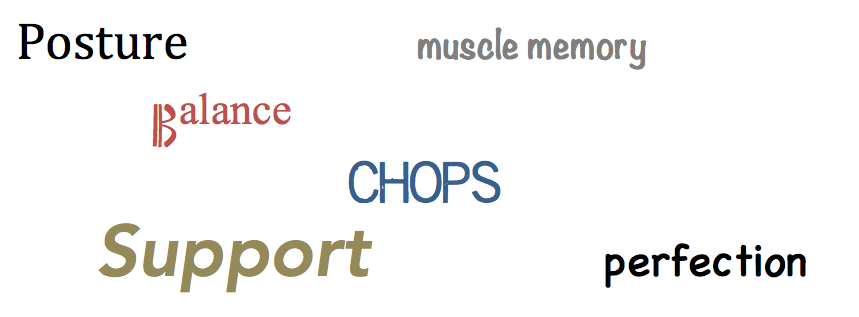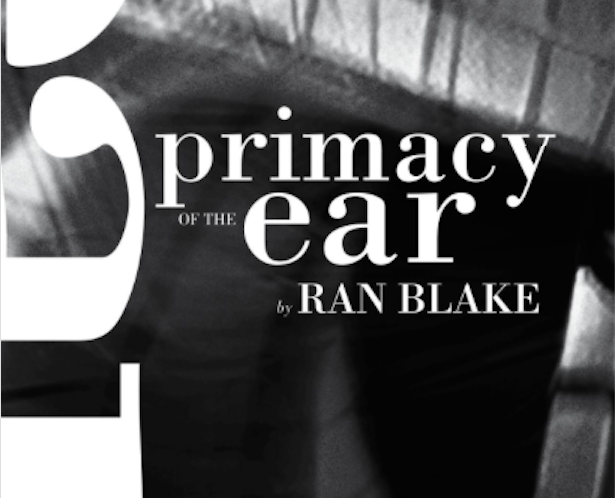The occurrence and development of events by chance in a happy or beneficial way.
–Serendipity (as defined by the Oxford Dictionary of the English Language)
It was my frightening and frustrating struggle as a saxophonist with focal dystonia (a neurologically based movement disorder that impairs coordination) that brought me to the Alexander Technique.
As I began to do more research on my condition, it became evident to me that, even though my focal dystonia symptoms were experienced through my muscles, they only ever surfaced whenever I began to prepare to play saxophone (more precisely, the moment I began to think about playing).
In the simplest sense, it was my reaction to the thought of playing saxophone that was triggering my focal dystonia symptoms.
After doing a good amount of research about the Alexander Technique as it applied to musical performance (and considerable amount of reading about the neuroscience of learning and unlearning), one key truth stood out to me that prompted me to seek out a certified Alexander teacher: Thought precedes and conditions reaction.
“So”, I said to myself, “if I can learn to think and react in a different, more constructive way when I play saxophone, I’ll have the best chance at improving my focal dystonia symptoms.”
I’m happy to say that this has proven to be true.
Resoundingly so.
And in the process of applying the Alexander Technique in addressing my focal dystonia symptoms, I became absolutely intrigued by the efficacy and possibilities of the work.
So much so that I decided to commit to the 3-year training program to become certified to teach this work.
The Alexander Technique continues to be my most effective tool in helping both my clients (mostly professional and serious student musicians) and myself as a musician.
If you’re not familiar with the Alexander Technique, it’s a practical set of principles you use to become aware of the (often) unconscious habits of misdirected effort (things that take you out of your optimal coordination) that you bring into your activities (like playing music!). By studying and applying the Technique, you learn to prevent or lessen these unwanted habits by changing your thinking, bringing yourself back to your natural, optimal coordination.
It’s about learning to respond to things in a more conscious and constructive way, instead of reacting habitually (and sometimes harmfully).
Lots of musicians who regularly take Alexander lessons rave about how the Technique makes playing feel easier, more natural, and with far less tension/effort than they’ve ever experienced before.
It’s helpful for decreasing/eliminating chronic back, neck, shoulder, jaw and wrist pain, as well as improving breathing, and balance (obviously helpful for any instrumentalist or singer!)
And even though I myself wasn’t motivated to seek out and Alexander teacher because of the maladies mentioned above, I did indeed suffer from most of them (especially back and shoulder pain!)
I was usually in some sort of state of discomfort when playing my instrument, just chalking it all up to “working hard”. I accepted pain as part and parcel of what a serious musician struggles with.
No, my motivation was simply about restoring (or at least improving) my coordination when playing saxophone. Period.
But as I began to take lessons, it wasn’t long at all that my back began to feel better (not just when playing, but all the time!), my shoulders began to widen and become freer, my jaw became flexible and responsive, and my breathing became more full, easy and supportive of my saxophone sound.
All great things, for sure!
I began to describe these other changes I was experiencing to my friends and colleagues as “serendipitous gifts”, meaning I was blessed in finding such positive things I wasn’t even looking for.
(And as you might have wondered/guessed by now, my focal dystonia symptoms were inextricably connected to the misdirected muscular effort that was causing these pains I’d been experiencing for so many years.)
Yet the most cherished, most profoundly life-changing serendipitous gift I found in studying the Alexander Technique was more simple, more basic, more essential to my personal well-being and growth as a musician:
I learned to treat myself with kindness.
This kindness includes how I treat myself when practicing and performing:
How I changed my previously harsh and rather loud “self-talk voice” to one of soft inquiry and assurance;
How I allow myself to be wrong in order to discover new ideas and techniques;
How I give myself permission to pause when practicing in order to redirect my efforts;
How I allow myself to rest optimally;
How I listen to myself (and the other musicians) with a more detailed presence;
How I allow myself to peacefully walk away from an exercise (or even a practice session) if it isn’t going just right and I can’t seem to put myself back on track;
How I accept and trust my efforts, sound and intentions when performing.
And so much more…
One of the biggest changes in how I treat myself is that, even when I’m doing something “wrong” when practicing or performing, that I don’t interpret that to mean that there is something wrong with me.
That’s huge for me, as it places me squarely in a place of gratitude, with an almost child-like curiosity when I practice. And feeling grateful, is perhaps, the most beautiful of all states of being.
As I’ve mentioned in some of my other blog posts, practice for me is now a form of meditation. It’s nourishing and ever so pleasurable.
And as a bonus, my saxophone practice has become more dynamic, more efficient, more directly helpful to me than it ever was.
All this because of the gift of kindness I give myself.
You see, when applying the Alexander Technique to any activity, you are learning to redirect your thinking in the most helpful way you can.
To do this, you must ask things of yourself, rather than demand them. (You can’t bully yourself into reacting constructively!)
I “ask” for my optimal coordination. I do so with kindness and deference. With sincere respect and love.
That makes all the difference.
I feel compelled to talk about all of this in my first blog post of the year because of my experience over these past years teaching the Alexander Technique to musicians.
I’ve had the honor and pleasure to share this work with (quite literally) some world-class performers.
And one thing I continue to notice is how harsh many of these wonderful artists can be with themselves as they approach practice and performance.
Of course they seek excellence! Of course they are disciplined! Of course they have high standards! Of course they’re willing to sacrifice!
But what they learn when studying with me is that it is often their fierce self-talk that is taking them out of their optimal coordination, taking them away from getting precisely what they want.
As their coordination improves, it does so by going hand in hand with their self-directed kindness. They ask instead of demand and marvel at the results. It’s about as “win-win” as you can get. A beautiful thing.
So I’ll continue to enjoy and cultivate my serendipitous gifts, and graciously share them with my students, living a musical life of gratitude, exploration, growth and satisfaction.




